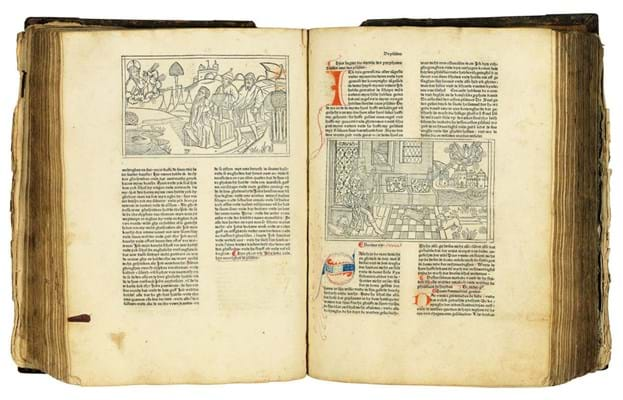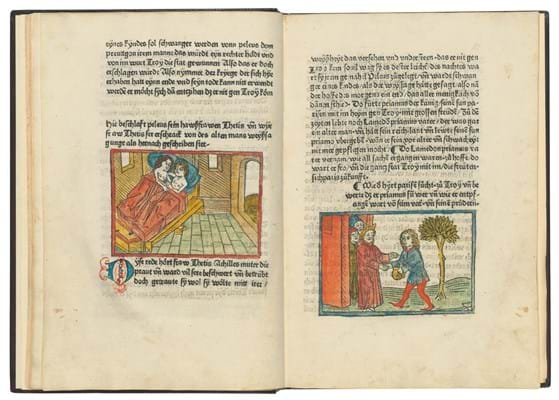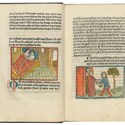This was the view of David Price, writing on the Bible and visual arts in early modern Europe in The Cambridge History of the Bible.
Printed by Heinrich Quintell, that Cologne edition, the first Bible in Low German, also marked the first appearance in print of a series of large-scale and hugely influential woodcuts.
Most of those 113 illustrations correspond closely with those found in a manuscript Bible produced in Cologne in 1457 – and as a consequence are attributed to an artist known only as the ‘Master of the Cologne Bibles’.
In a contemporary but now worn and defective binding of blind-stamped calf with metal fittings, a copy offered by Christie’s (25/20/12% buyer’s premium) on July 12 had a number of faults and shortcomings, including frayed edges to the outer quires. However, against a valuation of £30,000-50,000 it went on to sell for £195,000.
German translation
Published at much the same sort of time, and again featuring a series of cuts that established an illustrative cycle for the text – but a work very different in subject matter – was a 1474, first printed edition of Guido de Columna’s Historia destructionis Troiae.
This was a German translation by Hans Mair (d.1408) of a work that had been one of the main sources for the history of Troy since its composition in the 13th century by Columna, a troubadour at the courts of both Friedrich II and Edward I of England.
“That Cologne Bible marked the first appearance in print of a series of hugely influential woodcuts
Within 50 years it had appeared in 28 editions and seven languages, but only two other copies of this first version are recorded, one of them now in the British Library.
In a modern brown morocco binding, this rare example, like the BL copy, is illustrated with 67 woodcuts from 50 blocks.
These are ascribed to an artist known only as the ‘Bämler Master’ after the Augsburg printer of the book, Johann Bämler. It sold for £110,000.

















